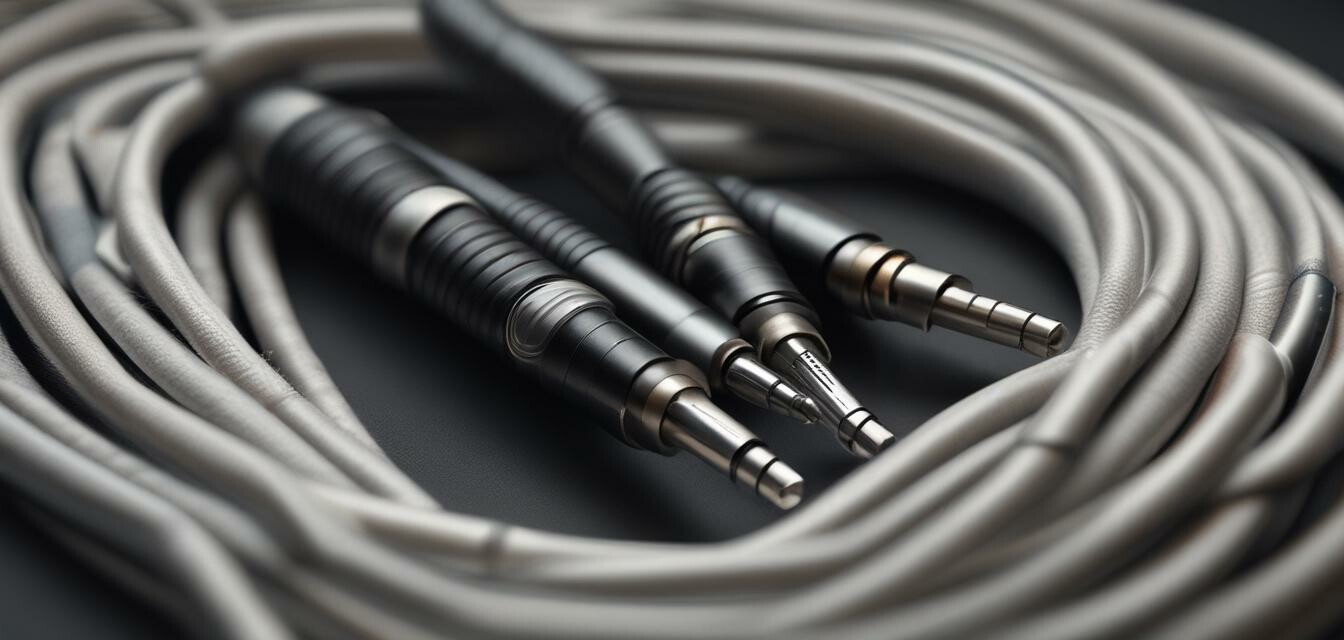
Understanding Cables: How They Affect Earbud Quality
Key Takeaways
- The quality of earbud cables significantly impacts audio performance.
- Materials and construction play crucial roles in sound clarity and detail.
- Choosing the right cable can enhance durability and convenience.
- Different types of cables offer unique benefits for different listening preferences.
- Regular maintenance and proper handling can prolong cable lifespan and performance.
If you're an audiophile or a music enthusiast, the quality of your audio experience goes beyond just the earbuds themselves. One often-overlooked aspect is the cables that connect your earbuds to your audio source. In this article, we will explore how different cable qualities affect audio performance in wired audiophile earbuds.
The Importance of Cable Quality
Audio cables serve as the conduit for sound to travel from your source to your ears. While many might assume that earbuds are the sole determiner of sound quality, the cables you use can make a significant difference. Poor-quality cables can introduce noise, reduce clarity, and ultimately impact your listening experience.
How Cables Affect Sound Quality
Sound travels through cables and can be significantly affected by several factors:
- Material: The type of materials used in the cable can affect conductivity and overall sound quality.
- Length: Longer cables can lead to signal loss, which may degrade audio performance.
- Shielding: Proper shielding can protect against electromagnetic interference, ensuring cleaner sound.
- Connector Quality: High-quality connectors prevent signal loss and ensure a secure fit.
Types of Cables for Earbuds
Understanding the different types of cables available is essential for making an informed choice. Here’s a brief overview:
| Type of Cable | Description | Benefits |
|---|---|---|
| Standard Copper | Basic cable made from copper, good for general use. | Affordable and readily available. |
| Oxygen-Free Copper (OFC) | Copper that has been refined to remove oxygen, reducing impurities. | Improved conductivity and sound quality. |
| Silver-Plated Copper | Copper wires coated with a thin layer of silver. | Enhances clarity and detail in sound. |
| Hybrid Cables | A combination of different materials, often including carbon or polymer. | Optimizes sound across various frequencies. |
Durability of Earbud Cables
Durability is another important factor. Quality materials can offer advantages such as:
- Tensile Strength: Cables that can withstand bending and pressure.
- Flexibility: Cables that retain shape and do not kink easily offer convenience.
- Weather Resistance: Some cables are designed to endure sweat and moisture.
Maintenance Tips for Cable Longevity
To ensure your audio cables last longer and perform better, follow these maintenance tips:
Beginner's Section: Cable Maintenance Tips
- Store cables properly to avoid tangling or damage.
- Clean connectors regularly with a soft cloth.
- Avoid pulling on the cable; always grasp the connector when unplugging.
- Keep cables away from extreme temperatures and moisture.
Choosing the Right Earbud Cable
Selecting the right cable involves understanding your listening habits and audio preferences. Consider the following factors when making a choice:
- Assess the audio source: Are you using a portable device or a high-end audio system?
- Evaluate your listening environment: Do you require extra shielding for minimal background noise?
- Factor in budget: While quality cables can be more expensive, they can yield better sound quality.
Conclusion
Understanding the impact of cable quality on earbud performance can drastically enhance your audio experience. By paying attention to the materials, construction, and maintenance of your cables, you can enjoy clearer, richer sound. Don't forget to check out our other resources on audio quality insights and continue your journey towards a better listening experience.
Pros
- Improved sound quality through high-quality materials.
- Increased durability with proper maintenance.
- Variety of options to suit different audio preferences.
Cons
- Higher quality cables can be expensive.
- Some cables may be less flexible based on materials.